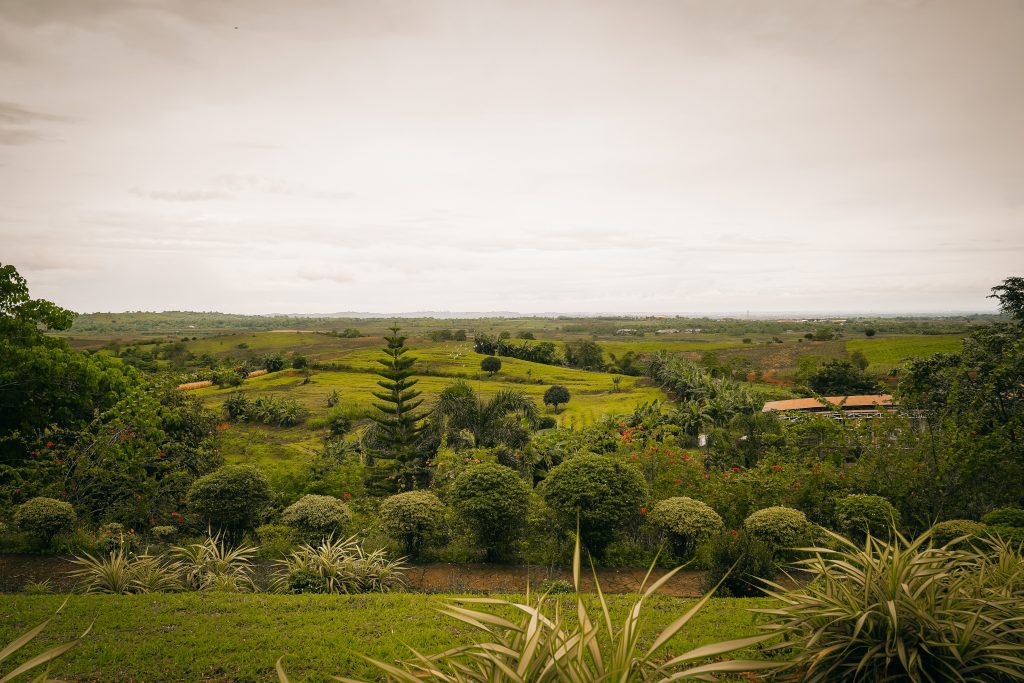
It took multiple flops before Simplicio Mendoza finally found success in business.
“I used to be a professional handicraft man. Then, I ventured into piggery, poultry, and even set up a bakeshop,” Mendoza, who also goes by the name Chef Impling, shares. “But it was latik that gave me the kind of profit I needed to provide stability for my family.”

Not to be confused by the toasted coconut curds used as garnish in the northern parts of Luzon, Catanduanon Latik refers to rice cakes with caramelized coconut milk. It’s a common breakfast food and snack in Catanduanes.
According to the 70-year-old chef, Catanduanons have been making latik even before he started mass producing in 1997. “But there was no study,” he says.
“With the help of the Department of Trade and Industry (DTI), I was able to standardize the process of making rice cakes based on research,” the chef says. “It took me a series of trial and errors for five years before I got the right recipe.”

It was latik that fulfilled his dreams of building his own home. A part of this home was converted into a factory for continuous production.
Twenty-five years later, the business is still thriving. He manages production and operations of his namesake brand, Chef Impling Delicacies, with his son Miko Mendoza.
Miko, 29 years old, has been involved in paglalatik (latik-making) since he was in high school.
“I think I was 11 or 12 years old when I started helping my tatay (father) in the kitchen,” he recalls. “I used to be the one to squeeze the milk out of the coconut.”

Now, Miko already manages their full operations, balancing his job as a public school teacher in the day and an entrepreneur at night.
As an educator, Miko acknowledges the impact of their business to the lives of their employees.
“Almost all of our employees are working students. Some have already graduated, and some are graduating this year,” he proudly shares. “Latik helped their families as much as it helped ours.”
Chef Impling and Miko share the same dream of expanding their business and having outlet stores in Manila.
The Art of Paglalatik

Chef Impling describes paglalatik as a creative work. “It takes patience, and you need to constantly try to find a new technique,” he says.
The first step to making latik is to find a good kind of malagkit (glutinous rice). Then, it has to be washed thoroughly and drained properly to prolong its shelf life.
Afterwards, malunggay extract should be added. Chef Impling says that the correct measurement should be two shots of extract for every 5 kilos of malagkit.
An alternative to malunggay can be chili leaves. But due to short supply of the latter, they stick with the former.
“In terms of taste, chili defeats malunggay. But in terms of nutrients, malunggay wins without a doubt,” the chef says.
The last step is to add salt to the rice cake mixture.

What completes this delicacy is the caramelized sauce that comes as a dip or a topping. It is made from thick coconut milk and sugar, and is packed in small sachets.
Making one batch of latik usually takes half of the day. Their daily production depends on the number of orders.
How to order

Those who want to order latik may do so by texting or calling the following mobile numbers: (+63) 919-957-9797 / (+63) 928-740-0000 / (+63) 921-982-1661.
Tourists may also buy directly at Impling’s Residence at Sogod-Tibgao, Bliss, Virac, Catanduanes.
They are sold per piece (Php30), in boxes of 5 (Php150), and in boxes of 10 (Php300).
Chef Impling Delicacies also have other must-try Catanduanon products. One of them is Tilmok (Php350), a viand made from freshwater shrimps cooked in coconut milk with garlic, ginger, onion, and chili. They also sell Pinangat (Php350) and Coconut Vinegar (Php250).
Travel Safely!
All tourist destinations in Region V have health and safety protocols in place to protect locals and visitors alike. Everyone is expected to comply by wearing face masks, regularly washing their hands, and practicing physical distancing.
To check out up-to-date information regarding local destinations that are open and the safety protocols and requirements needed for each location, you may visit http://www.philippines.travel/safetrip or download the Travel Philippines app at app.philippines.travel on the Google Playstore.




















